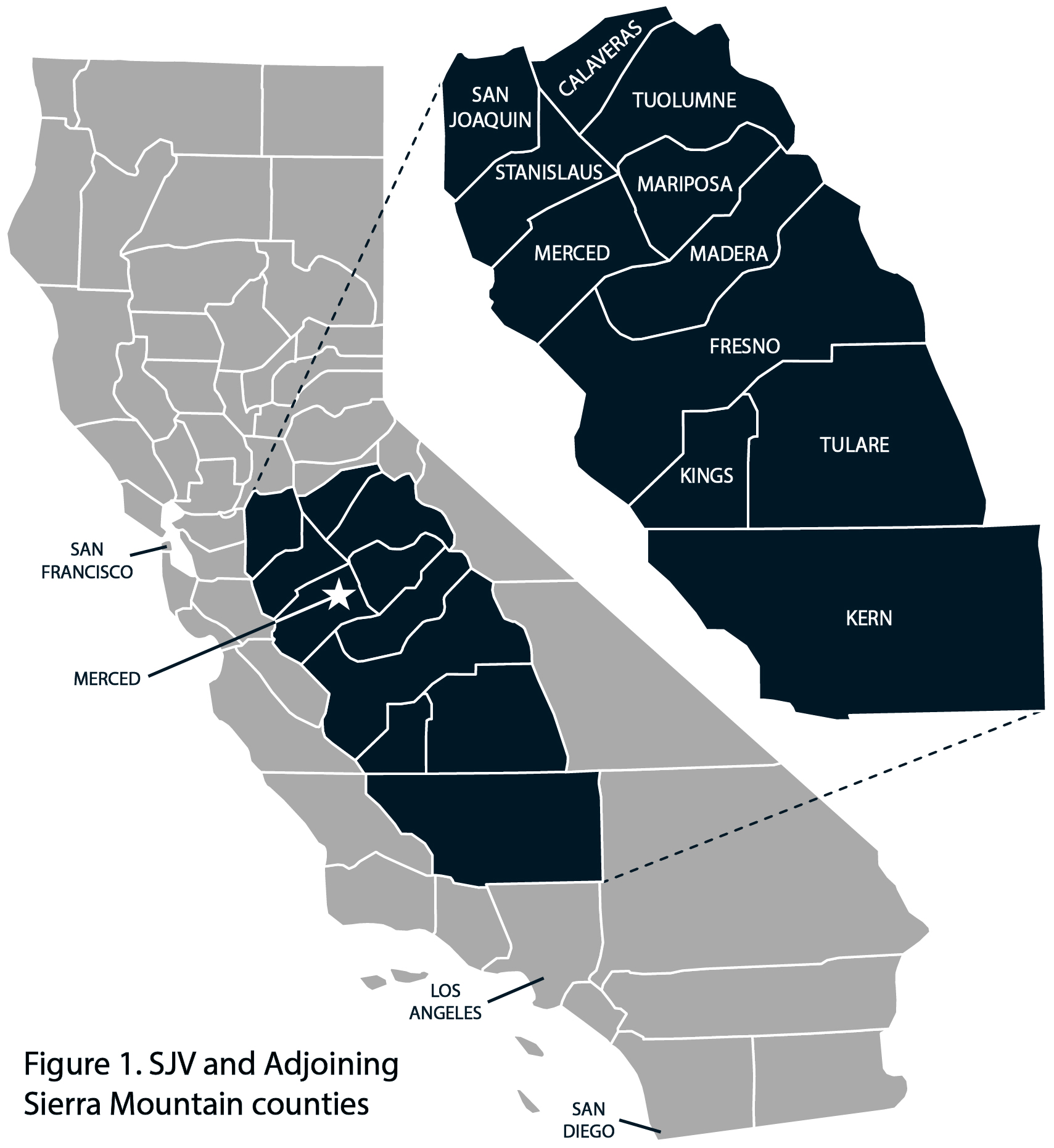As defined by the CDC, health disparities are preventable differences in the burdens of disease, injury, violence, or opportunities. UC Merced researchers across disciplines are addressing health disparities and developing innovative solutions.
There are also opportunties for both undergraduate and graduate students to receive further training in this area of research.
 How are health disparities relevant in the San Joaquin Valley?
How are health disparities relevant in the San Joaquin Valley?
While the 11 counties that comprise the San Joaquin Valley (SJV) and surrounding foothill communities make up the fastest growing region in the state where agriculture, oil and land development generate significant wealth, they also exhibit its highest levels of income disparities and rank poorly on an index of health factors reflecting health/risk behaviors, access to care and physical environment.
This region reports prevalence rates higher than the national average for conditions such as heart disease, diabetes, asthma, overweight/obesity, current smoking and psychological distress.
Across the SJV, differences in disease prevalence and limited or better health disparities in some conditions demonstrate the need to examine both the risks and resilience of individuals, families and communities.
Our region's racial, ethnic and socio-economic diversity provides an opportunity to examine rural health and health disparities as well as disparities within rural communities.

When UC Merced launches Give to UC Merced 2025 on Dec. 2, it won’t just be about one day of giving; the month-long campaign will be about hope, opportunity and community impact. For the 12th year,...

A husband’s optimism and confidence might play a crucial, if often unseen, role in helping babies arrive healthy and on time. A new study from UC Merced psychology researchers found that when married...

The same cellular renewal that keeps our bodies healthy might also fuel the growth of cancer. A UC Merced biologist has found that the brain could hold the key to stopping it. Professor Néstor Oviedo...